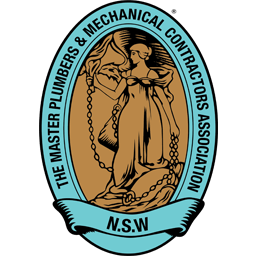It can be pretty frustrating if your tap keeps leaking after reseating. But with proper diagnosis and problem-solving, you can promptly fix it, as good as new.
To help you out, here’s a quick guide. From why your taps keep leaking even after you reseated them to how to find the best plumber to fix them, everything you need to know is down below.
Does Reseating a Tap Work?
Yes, reseating a tap usually works when dealing with leaks. By removing, repositioning, and re-securing the tap’s parts, you can ensure water flows out whenever you turn it on.
On the off-chance that reseating doesn’t work, you can replace the tap altogether. In some cases, it could even improve your pipework. For example, according to Sydney Water, installing WELS 4-star rated fixtures can help you reduce water use by half.
Why Your Tap Keeps Leaking After Reseating
If your tap keeps leaking after reseating, it may be due to any of the reasons listed below:
Worn-out Seals
Taps come with rubber or silicone seals to make it watertight. However, this component will deteriorate or harden over time. Even proper reseating won’t fix your plumbing problems if they’re too damaged.
Damaged Valve or Cartridge
While seals keep the water in, valves and cartridges control its flow through the faucet. Over time, these will get chipped, cracked, or otherwise damaged. And yes, not even reseating will help you resolve this issue.
O-Ring Issues
O-rings refer to those small rubber rings that act as a seal between the tap’s moving parts. Like the other components, they’re susceptible to wear and tear. That and improper placement can lead to leaks despite your reseating efforts.
Mineral Buildup
Hard water can also come into play. Left unaddressed, it could cause mineral deposits to slowly accumulate within your tap, pipes, shower, and sink. This will cause leaks and other problems within your valve and drain.
Improper Reseating
Reseating requires careful alignment of the tap’s valve, cartridge, seals, and other components. The leaks will persist if you fail to correctly position or tighten any of them. So best follow proper maintenance guidelines during the process. If you can’t, best call your trusted plumber to do the reseating.
Troubleshooting Tips for Leaky Taps (Post-Reseating)
But don’t give up just yet! Even if your tap keeps leaking after reseating it, you can still fix it. Just follow these troubleshooting tips to get started:
Double-Check the Job
Visually inspect the tap thoroughly after reseating it. Make sure all the components are correctly aligned and securely fastened. And watch out for any leaks, especially in that area where the faucet and pipe meet.
Check for Loose Handles
The post-reseating leak is due to loose tap handles. So before calling it a day, check if they’re properly tightened. If not, use your trusty wrench to fix the issue.
Tighten the Other Connections
While you’re at it, make sure the rest of the connections within your tap and pipe are secured tight. Again, use your wrench, pliers, screwdriver, or other tools to fasten loose parts.
Check the Water Pressure
High water pressure will stress out your tap and pipework, eventually leading to leaks and other plumbing problems. So make sure the water pressure is just right. If you can, consider installing a decent pressure regulator.
Consult an Expert
If you can’t pinpoint what’s causing the post-reseating leaks or have no more time to spare, consider seeking help from a professional plumber who can fix a variety of leaking tap issues. They’ll be able to troubleshoot the root cause in no time!
How to Properly Reseat Your Dripping Tap
Reseating your tap a second time can be a simple yet effective way to resolve that leak issue and save money on your next water bill. So make sure you follow these steps to ensure you do it right this time:
Step 1: Grab What You Need
These include your adjustable wrench, pliers, screwdrivers, and other tools. You should also ready the replacement parts, including the gasket, O-ring, seal, and more. Have a small table or chair nearby where you can organise them.
Step 2: Turn the Water Off
Switch off the water flowing through the leaking tap. If you don’t have a shut-off valve near the faucet, then go to the main water supply gasket and turn that off. This prevents water from flowing and disturbing you as you make the repairs.
Step 3: Start With the Handle
Use your screwdriver to remove the tap’s handle. If it has a decorative fixture, you should remove that, too.
Step 4: Remove the Parts
Then proceed to the tap’s cartridge and other parts from the valve seat. Use your adjustable wrench and other tools to safely remove them from the faucet. At the same time, take note of its orientation for reassembly.
Step 5: Double Check the Components
Inspect the cartridge, valve, and other components thoroughly. Clean them first if they’re too dirty to visually examine.
Step 6: Replace Damaged Parts
If the tap’s washers, O-rings, and other components are too broken or worn out, replace them with new ones. These are probably the ones causing the post-reseating leaks in the first place.
Step 7: Lubricate the Components
Apply silicone-based lubricant or plumber’s grease on some components, including the O-rings and washers. This will help ensure a smooth seal.
Step 8: Reassemble the Tap
Carefully reinstall all the parts you previously removed (minus the handle). Refer to the orientation you took note of earlier. And make sure everything is correctly aligned and securely fastened.
Step 9: Reattach the Handle
Lastly, reinstall the handle on the tap stem. Use your screwdriver to secure it in place.
Step 10: Turn the Water Back On
After all is set and done, turn the water back on. Then do the troubleshooting tips above to check if there are still any leaks.
When to Seek Professional Help
Most post-reseating leaks can be resolved quickly through DIY means. However, there are times when you need to leave it to a professional plumber instead. These include:
The Tap System Too Complex
If your tap has unique features or intricate components, calling a plumber instead of going DIY might be the best action. Through their expertise, accurate repairs can be made without causing further damage.
You Lack Confidence
Calling an expert might be better if you’re unsure about your plumbing skills or uncomfortable working with pipes and water fixtures.
There are Multiple Leaks
If you find yourself dealing with two or more leaky taps, calling a plumber may be the best solution. Doing so allows you to save time.
The Potential Damage is Too Severe
If the leaks threaten to damage your pipework and the rest of your property, opting for a plumber may be the best course of action.



